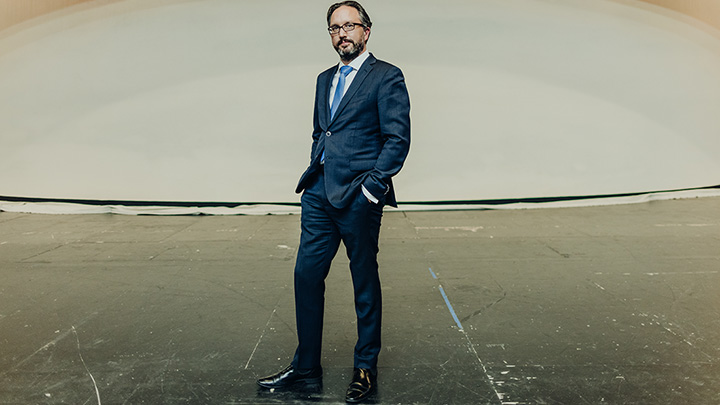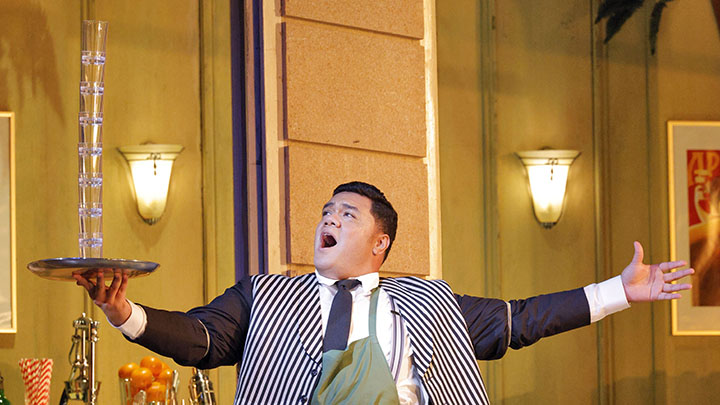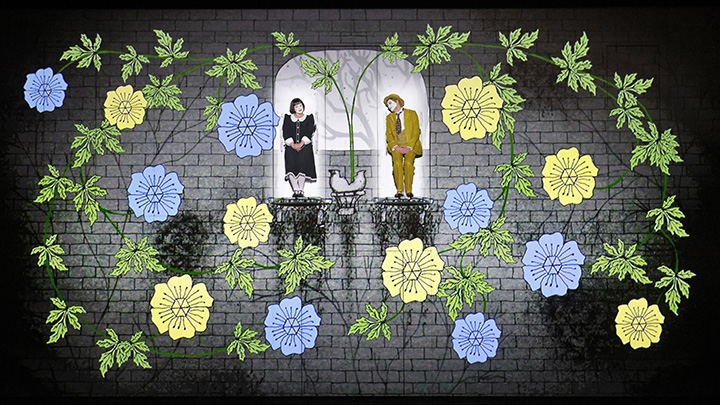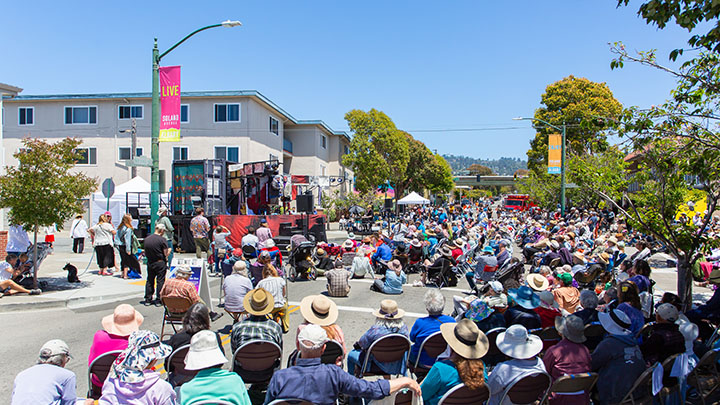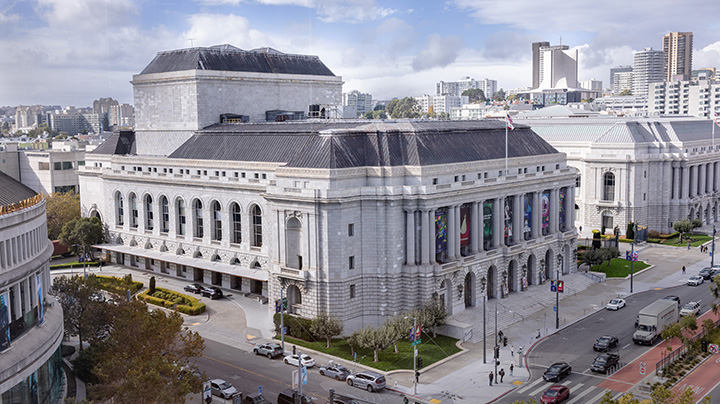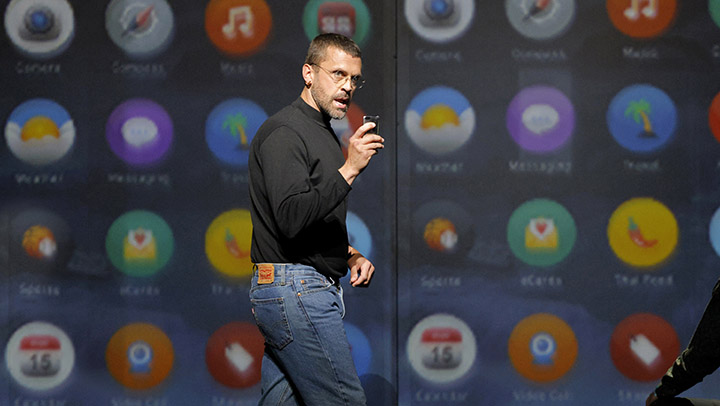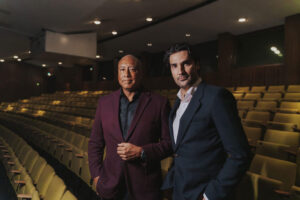“If you’re an opera fan, go.”
Those words of wisdom were offered by Michael Andor Brodeur, The Washington Post’s Classical Music Critic, at the end of his illuminating article from earlier this year in which he detailed why the world of four-centuries-year-old Opera seemed to be going to the same fate as Valhalla at the end of Götterdämmerung. Beginning with the much-publicized defunding of the English National Opera across the pond in November 2022 (which subsequently triggered the Save ENO petition by Sir Bryn Terfel), Brodeur almost chronologically listed most of the US opera companies’ struggles, including the Metropolitan Opera’s decision to draw from their endowment and reduce the number of future opera performances.
Closer to home here in San Francisco, much has been said since Esa-Pekka Salonen announced his decision not to renew his contract early this March. Then followed the revelations that the San Francisco Symphony had been operating with budget deficits for more than a decade and a subsequent public outcry over the decisions (including a petition by the SF Symphony Musicians).
One may wonder, what about SF Symphony’s next-door neighbor, the San Francisco Opera? This article will focus on SF Opera’s recently concluded 2023-24 Season, the first season in the second century of SF Opera, following the glamorous and star-studded Centennial Season, which recently retired San Francisco Chronicle music critic Joshua Kosman called “the most consistently rewarding one I’ve ever witnessed, a cornucopia of radiant singing, powerful conducting, gorgeous theatrical design, and gripping new works.”
When Season 101 was announced on January 24th, 2023, there were many chatters online and among the subscribers about how the Season was decidedly unglamorous and less starry, with many of the singers (and the conductors) making house debuts (some even role debuts) on War Memorial stage. Even Kosman above called it “at a more mundane level” and planned “to be disappointed but stoic.” Chief among the concerns was the unprecedented move to present three contemporary operas (out of eight) in a single season, always a touchy subject, particularly among long-term operagoers. Brodeur above alluded to that fact when he proposed “Contemporary opera is terrible!” as one of the average opera fan’s theories.
But it can be seen as a success that during Season 101, San Francisco Opera sold 75% of its available tickets (not counting the comped ones), maintaining the same rate as the Centennial Season and just a 1% decrease from Season 2018-19, the last full season before the pandemic. The total box office revenue for the season was $15.121M, slightly down from $15.58M the previous season (which had one extra mainstage concert). The box office revenue for Season 2018-19 was higher ($16.427M), but that season had two more opera performances (53 vs 51 in the last two seasons).
Artistically speaking, though, I think Season 101 was extraordinary and a worthy successor to the Centennial Season, a season to which all the accolades that Kosman bestowed on the Centennial Season could also be applied. Music Director Eun Sun Kim successfully initiated her multi-year journey into both Giuseppe Verdi’s and Richard Wagner’s works with winning performances of their Il Trovatore and Lohengrin. At the same time, debuting conductors Clément Mao-Takacs and Ramón Tebar brought energy and excitement to the War Memorial stage with their vigorous conducting and incisive interpretations of two very different works, Kaija Saariaho’s heart-wrenching Innocence and Gaetano Donizetti’s evergreen L’elisir d’amore, starring crowd favorite Pene Pati.
The four singers making US, house, and role debuts in this season – mezzo-soprano Judit Kutasi, sopranos Slávka Zámecníková and Julie Fuchs, and countertenor Carlo Vistoli – all turned out to be exceptionally great finds, bringing a thrilling sense of discovery to SF Opera audiences. For his role as Arsace in George Frideric Handel’s Partenope, Vistoli was also announced earlier this month as the winner of this season’s Jan Shrem and Maria Manetti Shrem Emerging Stars Competition, based on a popular vote conducted online at sfopera.com with a $10,000 cash prize. Other house debut standouts included baritone John Moore and tenor Jamez McCorkle in the intense title roles of The (R)evolution of Steve Jobs and Omar, respectively, and the extraordinary Finnish interdisciplinary artist Vilma Jää in Innocence.
Staging wise, a string of glorious and engrossing productions came to the War Memorial, especially for the three contemporary operas: Innocence, The (R)evolution of Steve Jobs, and Omar. David Alden’s militaristic staging of Lohengrin and Daniel Slater’s rip-roaring, 1950s Italian Riviera-set L’Elisir d’amore also brightened the stage.
Digging deeper into the finances, fascinating facts about Season 101 emerged. Barrie Kosky and Suzanne Andrade’s internationally acclaimed “silent-film” treatment of Wolfgang Amadeus Mozart’s perennial Die Zauberflöte still proved to be a crowd-pleaser, bringing the audience out in droves to the War Memorial. The Summer Season opener led the pack with nine performances, selling 24,909 tickets, 92% of capacity (not counting the comped tickets). Even more astonishing was that among those sold tickets, only 33% were subscribers. The rest were single ticket buyers and 46% were new buyers! This season, the demographic composition of subscribers versus single ticket buyers was almost the complete opposite, as 66% of single ticket buyers were under 65 years old, while only 31% of the subscribers were in the same age group.
Omar was second at 88% capacity, followed by the first revival of Sir David McVicar’s well-traveled Il Trovatore which opened the season at 78%, L’Elisir d’amore at 75%, and both The (R)evolution of Steve Jobs and Partenope at 66% (Partenope had one less performance). The outstanding Lohengrin and Innocence occupied the bottom two, at 64% and 63%, respectively. All of these operas (except Partenope) had six performances each.
Omar was another intriguing case study. The opera—inspired by the story of the 19th-century Islamic scholar Omar ibn Said, who was brought to America and sold into slavery in South Carolina—sold a whopping 62% single tickets to more than 53% new ticket buyers! In fact, single tickets trumped subscriptions in all three contemporary operas (The (R)evolution of Steve Jobs and Innocence were at 58% and 55%, respectively), proving simultaneously that contemporary operas do attract younger audiences and that those same audiences are not inclined to subscribe. On the other end of the spectrum, the revival of Christopher Alden’s Olivier Award-winning Partenope provided the subscribers, whom we can assume to represent the most informed subsection of the audience, with tons of enjoyment, as 59% of them decided to add this opera to their subscriptions (the most this season).
I sat down with Shilvock last week to discuss Season 101 in great detail, as well as the U.S. opera world in general. He addressed the various roles contemporary operas could play. On the one hand, pieces like Omar and last year’s El ultimo sueño de frida y Diego were behaving in very similar ways to the great classics like La bohème and Carmen in that they were drawing people in with just popular appeal and pulling in a lot of single-ticket buyers, indicative of Shilvock’s “magic touch” in selecting contemporary stories that connected well with the SF Opera audience. On the opposite side of the spectrum, Innocence, for example, captivated the audiences who attended it as one of those “life-changing experiences,” and helped make the case for donations to bring on more cutting-edge works.
Free community outreach and education initiatives – like Bohème Out of the Box, a free outdoor show of an abridged version of La bohème performed by SF Opera’s Adler Fellows and guest artists with piano accompaniment, which returned for its second season this year – indeed demonstrate a commitment to inclusion. Still, Shilvock attributed the inflow of new patrons at the War Memorial to the very popular “Dolby tickets,” a nickname for the Dolby Family’s Opera for the Bay ticket program. Partnering with the Dolby Family, the initiative, first introduced during the Centennial Season, provides an average of at least 100 $10 tickets per performance (in good seats) for all mainstage performances to Bay Area residents who had not purchased tickets in the past three years.
SF Opera has had almost 17,600 Dolby ticket buyers to date (over three seasons), with over 70% brand new ticket buyers. Furthermore, Dolby patrons bought a second ticket in the same year at a 23% rate compared to a 9% general rate for non-Dolby first-time ticket buyers. Fascinatingly, the fastest-selling Dolby tickets for Season 2023-24 were Innocence (for contemporary opera) and Die Zauberflöte (for standard repertoire). Dolby tickets go on sale one month before the opening of each production and are only available while supplies last. For the first two productions of the 2024–25 Season, 1,146 Dolby tickets for The Handmaid’s Tale and 846 for Un Ballo in Maschera (both seven performances each) were sold recently.
“The Dolby tickets audience is about 15 to 20 years younger than our regular audience,” Shilvock said. “After the first year of the Dolby program, with a lot of very detailed demographic data, we can see that it made a big difference on age, but it had not made a big difference in terms of other demographic data such as race, household income, or geography.” In turn, the knowledge helps the Company to address other demographic data and even to launch another program, the Osher Future of Opera Subscription, a subscription version of the Dolby concept underwritten by Bernard and Barbro Osher and designated for anyone who has not subscribed in the past three years. Since its launch last year, 4,000 subscription packages have been sold, with the breakdown of 12% of people brand new to SF Opera, 56% of single ticket buyers/previously not subscribers, and 32% of lapsed subscribers coming back via this offer.
With all the excitement of seeing new faces in the auditorium, SF Opera naturally hopes to bring them back for more. Over the last decade, most of the new people’s second operas tended to be classic operas, whether they came for a contemporary or a standard repertoire in the first place. “The one thing that we’re trying to build in the community is trust,” Matthew explained. “Trust that we can tell the stories with authenticity, integrity, beauty, and, of course, excellence.” Building such community trust is essential to bring the audience back for their second opera and, more importantly, to improve the general perception of the Company at large. “What we have to do as a company and as an industry is to inspire people to believe that it’s a welcoming experience when they’re coming to this Company, and it’s not a pretentious or precious experience.”
Before the pandemic, SF Opera did a broad attitude opinion poll about the company. The result indicated that while it received high marks for being “warm, welcoming, and engaging” from the opera audiences, those who never went to the Opera thought that the Company was “cold and sterile.” Shilvock believed that the Dolby tickets and the Osher subscriptions helped change the public’s attitude toward the Company. “What happens with both the Dolby and the Osher [programs] is that they are trusted philanthropic names in the community, and people see them as subsidized tickets and not just cheap tickets. It’s amazing the loyalty is generated in that program.”
Like most U.S. opera houses and symphonies, SF Opera relies heavily on public funding and philanthropic efforts. In a recent interview in the Financial Times, Shilvock identified that “ticket sales as a percentage of total revenue have fallen from 60 percent to 16 percent over a 60-year period, even as costs have grown at a faster rate than revenue” That leaves philanthropy to make up the difference. One question often asked is about the lack of tech industry donors, as SF Opera is located in the Bay Area and surrounded by Silicon Valley. Shilvock stressed that “the only reason why people will give us money is because they are passionate about what we do. In the past, there may [have been] a more complex interplay of motivations … all of that has disappeared.” Nevertheless, he saw a sort of “generational movement” with people in their 50s or older beginning to think about their legacy and philanthropy, as evidenced by several new donors during the Centennial Season with very transformational gifts.
There also seems to be a significant shift in attitude among both philanthropists and audience members toward contemporary operas. Shilvock singled out Dead Man Walking (premiered in 2000) as a probable turning point, as at that time, it could only happen due to the efforts of “heroic philanthropist” Phyllis Wattis in advocating for the piece. Since then, there has been a growing embrace, appetite even, for engaging stories that deeply touch the community. SF Opera is planning to continue in that direction with this season’s The Handmaid’s Tale, plus the newly announced co-commission, Missy Mazzoli and Royce Vavrek’s The Galloping Cure, about the opioid crisis.
Nevertheless, Shilvock cautioned that the bar seemed to work differently between the American audiences and the European counterparts in the sense that “if you don’t engage someone in that one piece, there is a much greater chance you would lose that person.” Hence, it is imperative for SF Opera, and all US opera companies in general, to understand their audience and community and carefully pick contemporary pieces that have transcendent impacts and provide a thrilling experience.
In our conversation, Shilvock also discussed the growing costs of producing an opera season and why revenue couldn’t keep up with the costs. With around a $90 million budget and considering 3% inflation, he said, every year about $2-3 million in new funds had to be found; that’s just the inevitable cost of doing business. When only 16% of the budget originated from the box office, most of it came from the donors, not counting any attrition in the donor base. While SF Opera tried to keep expense escalation to 2-3% a year, the revenue escalation over a decade didn’t even come close to that, creating a “gradual stretching” of the revenue and expense curves over time. He pointed out that “if we were to do the 2019 Season (the last full season before the pandemic) now exactly the same … same contract, same everything … it would cost between $15-18 million dollars more.” 80% of the costs were labor, both union and non-union. Shipping was the major headache among the non-personnel items, as in one case, it nearly cost four times what it did before the pandemic and now generally costs around double its pre-pandemic amount. Another issue was the cost of building materials, forcing the company sometimes to adopt alternative materials or techniques to keep costs minimal.
So, what’s in store for SF Opera in the upcoming season which starts on Friday with Un ballo in maschera? Unfortunately, like most other US opera companies this coming season, the growing costs force SF Opera to decrease the number of opera productions in Season 2024-25 to six, per SF Opera’s announcement on February 20, 2024. It will be supplemented with two concert presentations, including Ludwig van Beethoven’s Symphony No. 9 (to commemorate its 200th Anniversary) and a special Pride Concert in the summer. In his 2024 Summer Season Postlude article, Shilvock addressed the reasoning:
[Our] fiscal model […] has stretched to breaking point over twenty years. Even with a box office firing on all cylinders, the percentage of revenue from ticket sales has declined from 60% in the 1960s to 16% today, a trend mirrored nationally. And, while an ever-greater need has been placed on our incredibly generous donors, our base annual support has remained static for 15 years. When I started working here in 2005, our annual fund was $29M; as we go into 2024-25, our annual fund is projected to be … $29M. With inflation it should be $51M. These trends are happening all over America and are forcing increasingly difficult decisions, as we see next year with our change to six mainstage operas.
With the reduced number of operas, SF Opera is no doubt hoping for more audiences nightly in the new season. The signs have been promising, with the number of Dolby tickets sold so far, as discussed above, and the selling out of the Beethoven concert. I wish the Company good luck in the new season, and I can’t wait to see what SF Opera has in store. I’ll leave you with a quote from Shilvock explicitly written for this article:
“We’re seeing the opera house as a place where the whole community can come together to explore what it means to be human. We’re seeing the emergence of the next generation of passionate opera-lovers, inspired to sustain the creative community so vital for opera, propel forward artistic excellence, create new works and productions, and drive the art form forward. It’s an exciting time!”
So, if you’re an opera fan and want to see the art form thrive for another four centuries, please, please, please, GO!!
Photos: Sasha Arutyunova, Cory Weaver, Reneff Olson, Matthew Washburn

